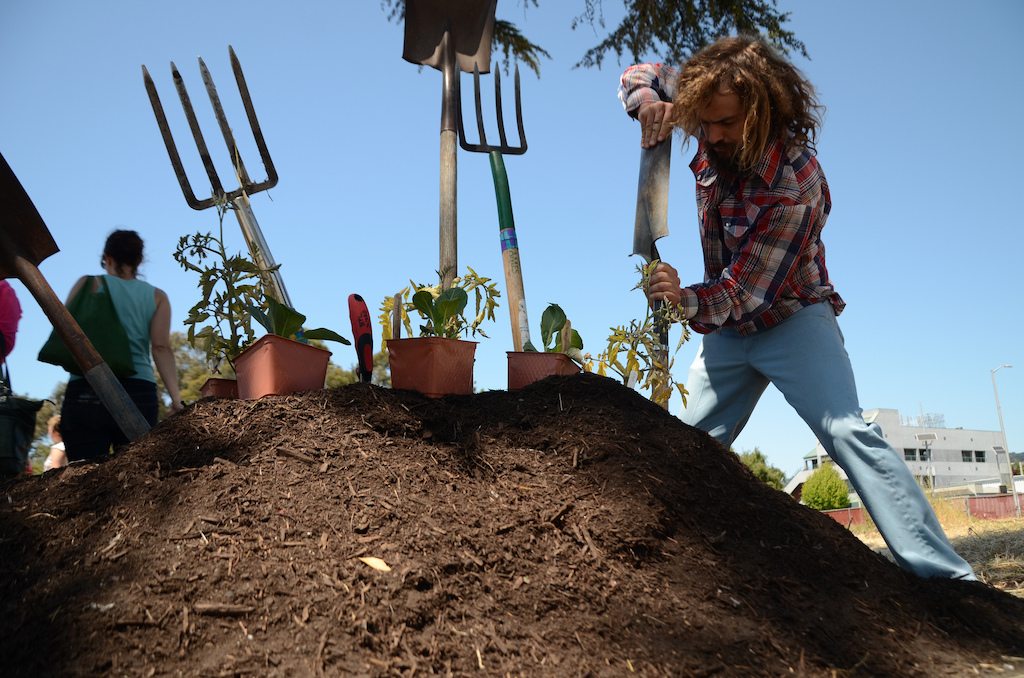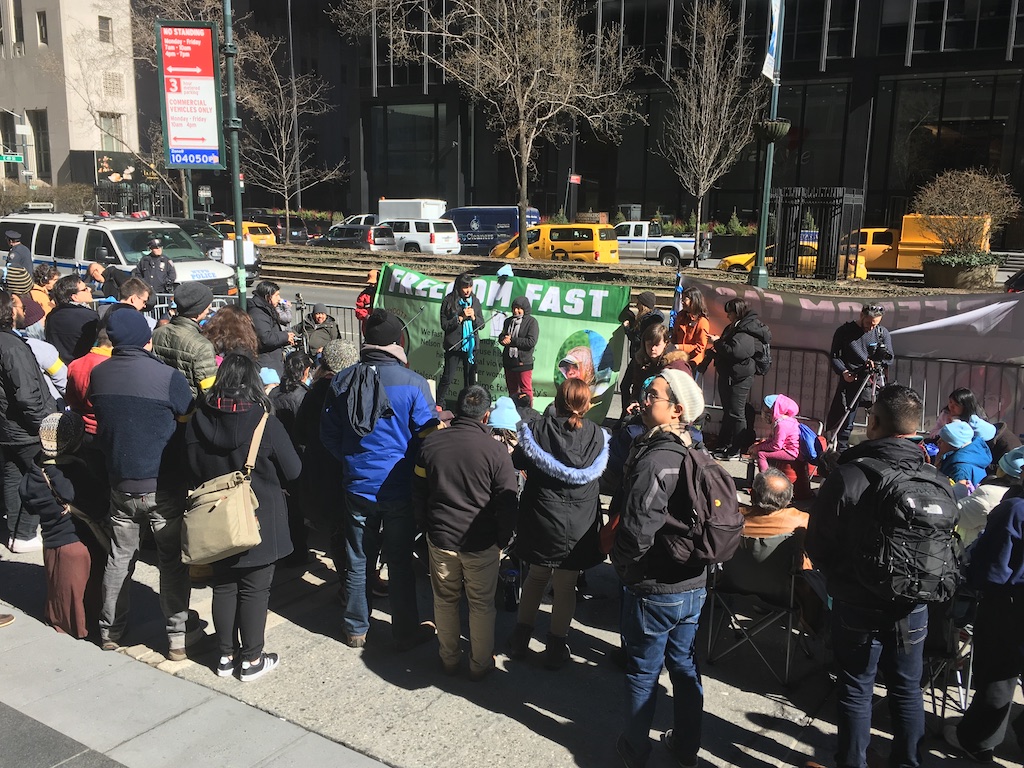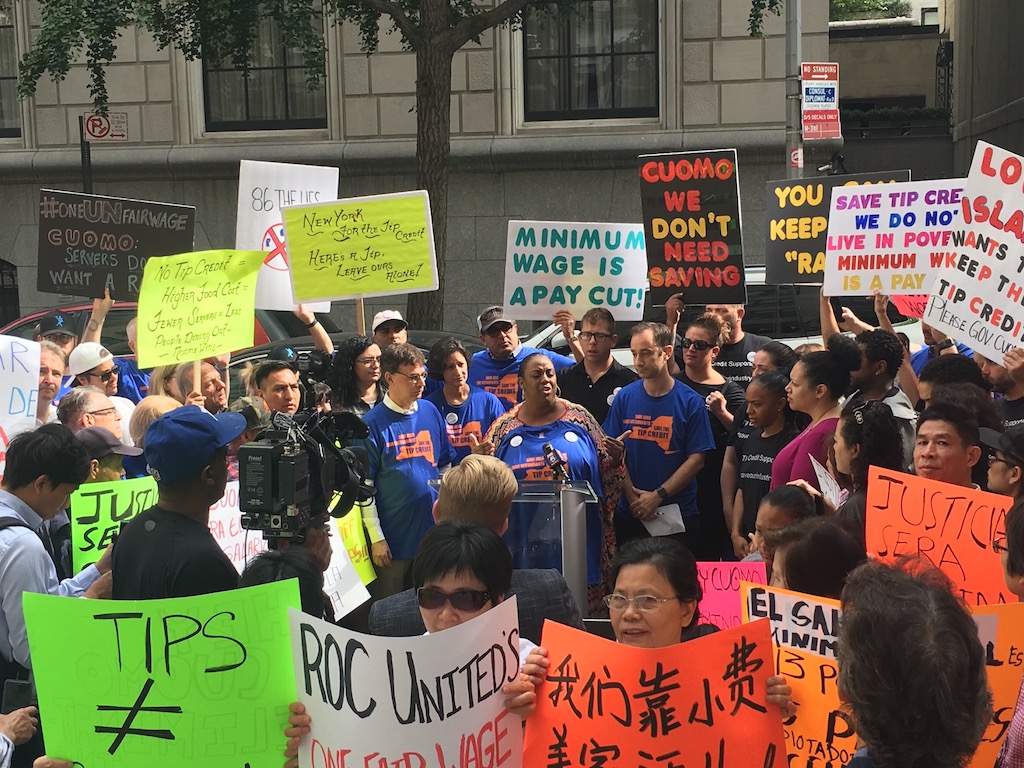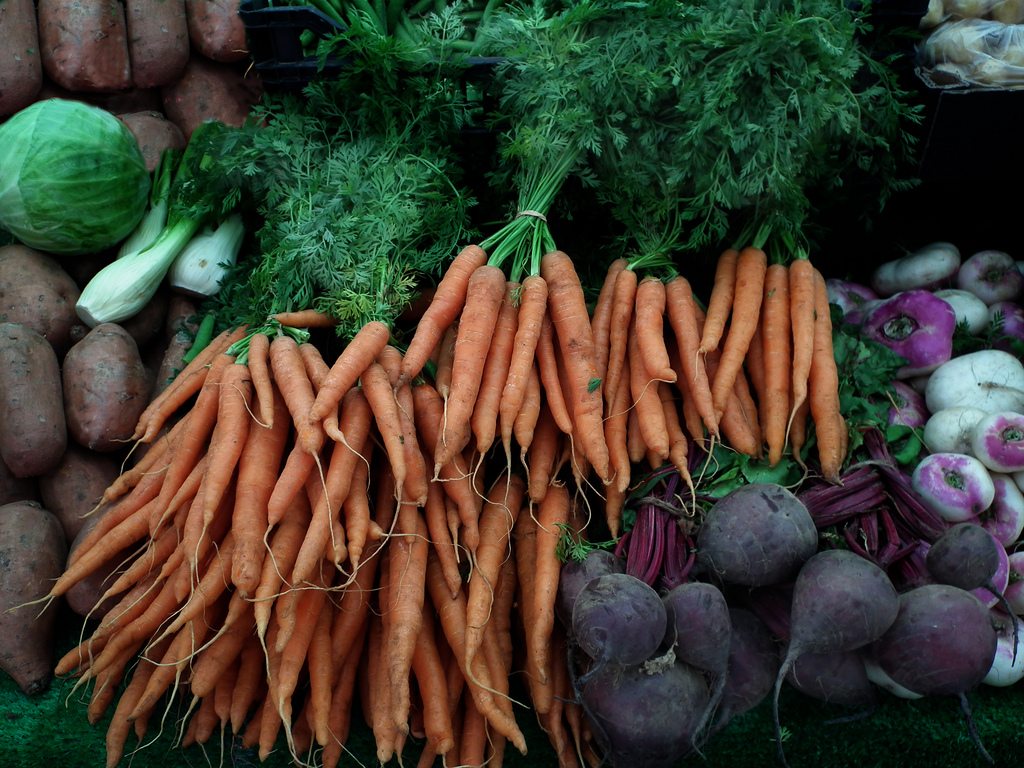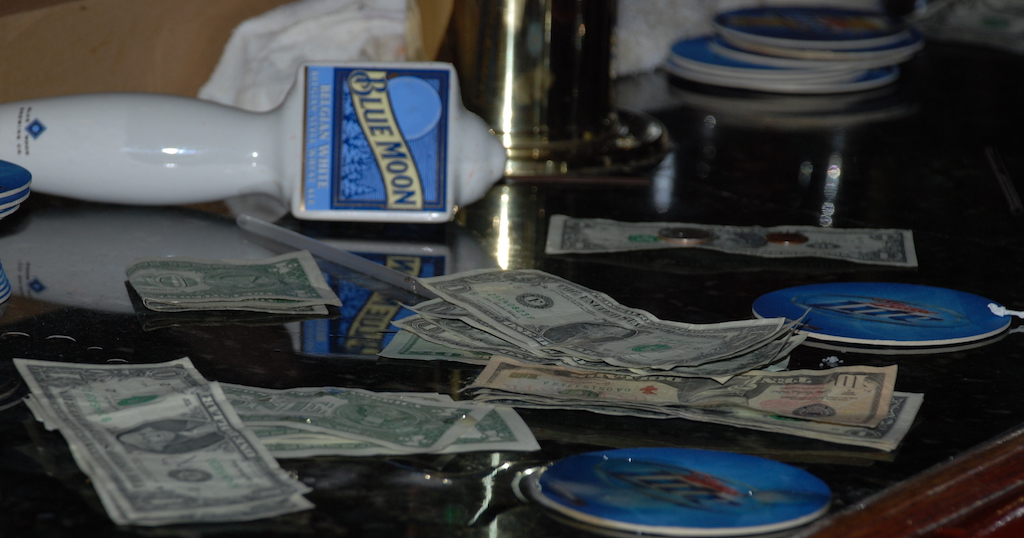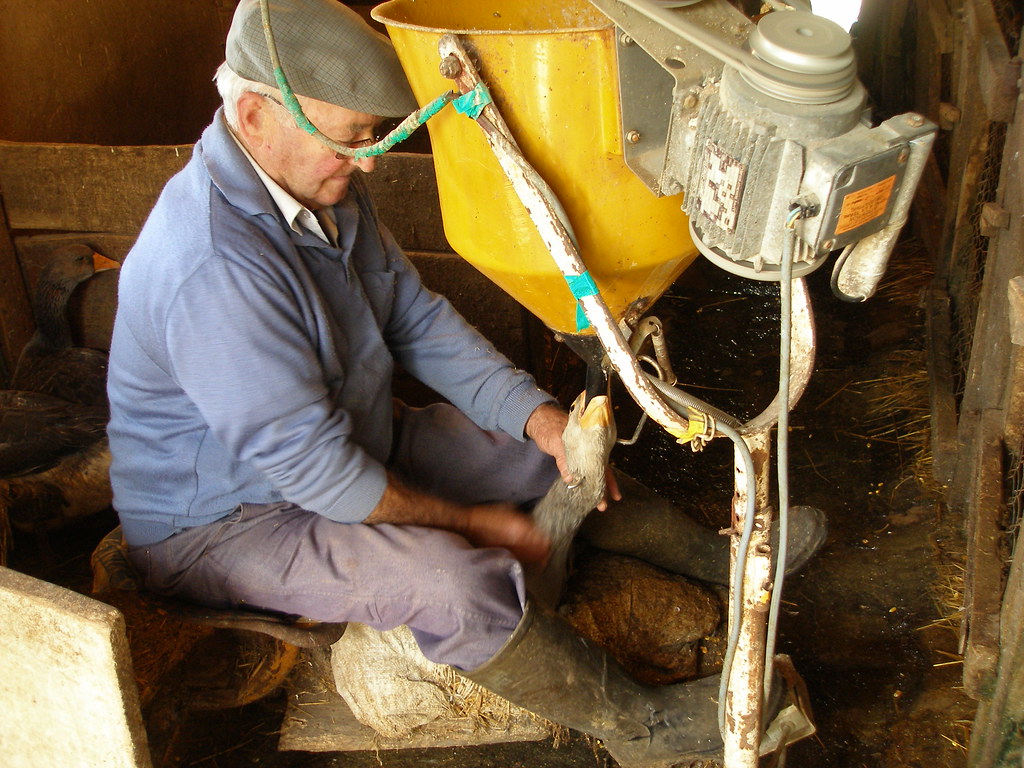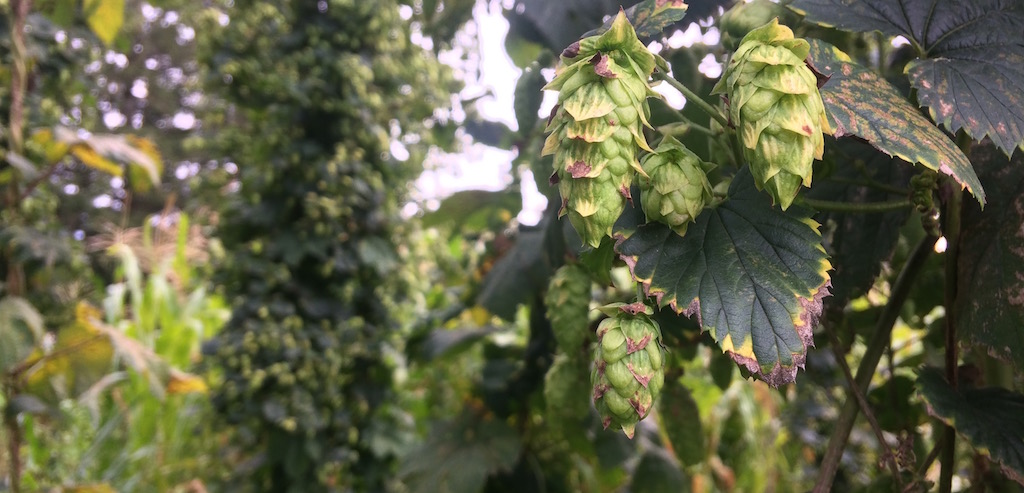
Katherine Sullivan
Farmer Chuck Rhoades is betting big on a small crop. Twenty acres of 18-foot wooden beams stand like telephone poles on his farm in the small town of Willet, New York, about 200 miles north of New York City. In late summer, these poles hang heavy with bright green hops, the plant that imbues beer with its signature bitter kick.
As Rhoades likes to say, “Anyone who knew anything about growing hops died, in New York, 100 years ago.”
In the 19th century, New York was the largest hops producer in the United States. Farms across Central New York, in counties and rural towns outside Syracuse, were the epicenter of hop production. By 1849, New York State was producing nearly all the hops in the U.S. So big was the annual hop harvest, that farms held “hop parties” in August and September, when migrant workers would travel in from surrounding cities to help bring down the heavy, hop-laden “bines” and pick the hops by hand. At night, they’d feast, dance, and play the fiddle in the empty hop yards.
But then came Prohibition. And around the same time, New York’s hops were struck by a devastating mildew. By the end of the 1920s, the industry was nearly totally wiped out.
New York’s 2012 Farm Brewery Bill gives incentives to breweries that source at least 20 percent of each beer’s ingredients from within the state
In the meantime, the Pacific Northwest rose as the country’s main hop supplier, with Washington, Oregon, and Idaho growing all of the country’s hops on farms 20 to 50 times bigger than Rhoades’. The vast majority of hops are grown in Washington’s Yakima Valley, just east of the Cascade Mountains. The area’s dry, semi-arid climate means that all 19,000 acres of hops in the valley rely on irrigation, and are far less susceptible to mildews and diseases that can strike the crop in wetter climates.
Now, there’s a movement brewing in New York to reclaim this bygone era. Capitalizing on America’s craft-brew obsession, the state legislature in 2012 passed the Farm Brewery Bill, giving incentives to breweries that source at least 20 percent of each beer’s ingredients from within the state. A ‘Farm Brewer’ doesn’t have to be on or near a farm—the term applies to any craft brewer that pledges to use products from New York farms. In just a year—by January 2019—the minimum quota of in-state ingredients will triple to 60 percent, and increase to 90 percent in 2024. Farmers have responded, and hop acreage has gone from 0 to 400 in under a decade.
The Farm Brewery Bill was inspired by the success of the 1976 Farm Winery Act that allowed vineyards to sell their wine directly to customers, instead of going through distributors, as the law previously required. That law helped establish distinctive and lasting wine regions in the state, most notably the Finger Lakes region and the North Fork of Long Island. The New York Wine and Grape Foundation estimates that statewide, the wine industry has had a direct economic impact of upwards of $5.5 billion in 2017.
The Farm Brewery legislation aimed to do the same for beer, supporting local business while reviving ailing rural communities upstate. One of the biggest perks in the law allowed breweries that met the minimum local ingredient quotas to sell pints across the bar, open up to five locations, and sell New York State-produced wines and spirits alongside their beers. Selling by the pint gave farm breweries a huge advantage over microbreweries, which could only give away free samples or sell growlers.
“We’re just beginning to understand what we don’t know yet.”
But in 2014, the state passed the Craft Brewery Act, which some say took the teeth out of the Farm Brewery Law because it permitted all microbreweries to sell by the pint as well.
Now, breweries can hold either a Farm Brewery License, a Microbrewery license—which carries no in-state sourcing requirement—or a combination of both, allowing them the perks of the Farm Brewery Law, while exempting a few of their beers from the local requirement. There are currently 174 farm breweries in New York, but with 2019’s 60-percent quota approaching, the fear is that many may leave the program, finding it too difficult to maintain.
“There’s just so many—so many little things,” Rhoades says. “And I know we’re just beginning to understand what we don’t know yet.”
Early on, quality and consistency often fell short. Kristen Lyons, owner of Binghamton Brewing Co. and a board member at the New York State Brewers Association, remembers some trial and error in the first years of buying local. “Early on, there were hops that weren’t what we expected,” she says. Her husband and the brewery’s co-owner, Jason Gardner, remembers getting an order of hops from a local farm and discovering, only after the long brewing process, that they had made his beer taste strongly and undeniably of garlic. “There are two flavors that don’t work in beer,” says Gardner. “Fish and garlic.”
After her garlic-flavored surprise, Lyons says she’s come around in the past three years. “Now there are more growers, less hobbyists and more professionals. Of course it’s not 100 percent perfect,” she says, but it’s improved a lot.
Hop plants take three years to mature; so tailoring hop varieties to changing trends in brewer and consumer preferences is a tough task
Despite building the industry back from zero, Rhoades says he and many other hop farmers have ended their seasons with a surplus of hops. It’s not that they’re growing too many hops for the 326 craft breweries in New York to use, it’s that they’re not growing the right ones.
Lyons holds dual licensing for her brewery. “A lot of those flavors, the ones people really want, you just can’t get them in New York,” she says. Lyons is talking about varietals like Citra, Mosaic, and Simcoe that are proprietary to farms in the Pacific Northwest. Their fruity, tropical flavors are popular in IPAs, the darling brew of the craft industry.
Farmers know this all too well, and Rhoades identifies his inability to grow high-demand hops like Citra as a “serious problem” in the industry. “The hop cartel, if you will, in the Pacific Northwest, controls the propagation of those plants,” he says. “So we can’t get them.”
Pedley thinks the ‘local is better’ movement has gone too far, equating “local” with “good,” when that might not actually be the case. “There are a lot of people in New York State who are stuck in this mentality that, if you buy it from NYS, it’s got to be good,” he says. “That’s not true. There’s a lot of bad beer in New York State.”
Other brewers share his view that using local-only hops in their beers limits what they can make and is a liability—in terms of both consistency and availability.
Hop plants take three years to mature; so tailoring hop varieties to changing trends in brewer and consumer preferences is a tough task. As a board member at the Brewer’s Association, Lyons is circulating a survey to farm breweries, looking to gauge what brewers want out of local hops so they can better communicate their needs to farmers. There’s some fear that the 2019 quota increase could be the death of the movement.
“You can make some really good IPAs. You just have to be willing to look and find the hops that work.”
“The Machiavellian side of me says that when it hits 60 percent, there will be a lot of brewers that just say, ‘I’m not going to do this, it’s too hard,’” says Marty Mattrazzo of Farmhouse Brewery in Owego, New York. Farmhouse uses 100 percent New York State-grown ingredients in its beers, and Mattrazzo even malts his own grain. “They’ll give away their Farm Brewery license, get a Microbrewery license, and stop buying any hops in New York State,” he says. “All this momentum we’ve built for the last five years of hop growers and grain growers would be lost.”
There are a handful of other brewers committed to using 100 percent in-state ingredients, including Jason Sahler at Strong Rope Brewery in Brooklyn. Sahler even buys some of his hops from Rhoades’ farm in Willet. (There are few middlemen in New York’s nascent hop industry, and most farm brewers buy directly from farmers they know personally.)
In an attempt to develop more hops that “work” in New York, the last state budget allocated $200,000 to hop research, and there’s hope for more in the future. Steven Miller, Director of Cornell Cooperative Extension’s hop program, is leading tests on wild hops found around the state to see if any can be tweaked to become a sought-after, uniquely New York hop that flourishes in the state’s climate.
For farmers like Rhoades, who dove into the business, a local blockbuster hop can’t come soon enough. When asked when he expects to break even, Rhoades laughs. “I don’t know if anyone knows in New York how long that is,” he says. “I could tell you on paper I thought it was going to be three years. And I can tell you on paper now—it’s not going to be. It’s going to be a lot longer than that.”





